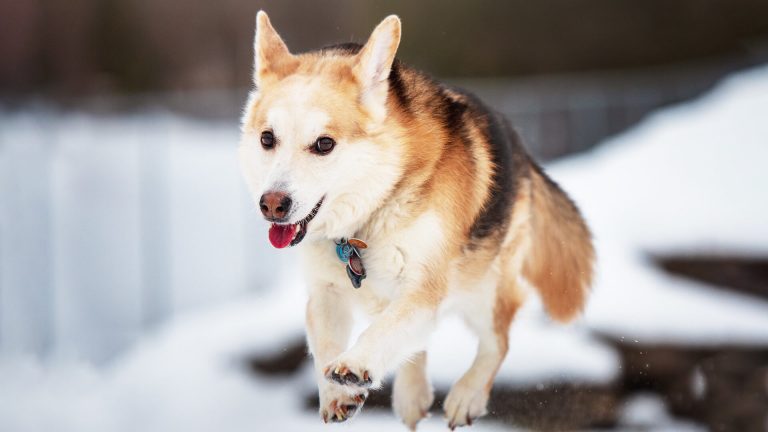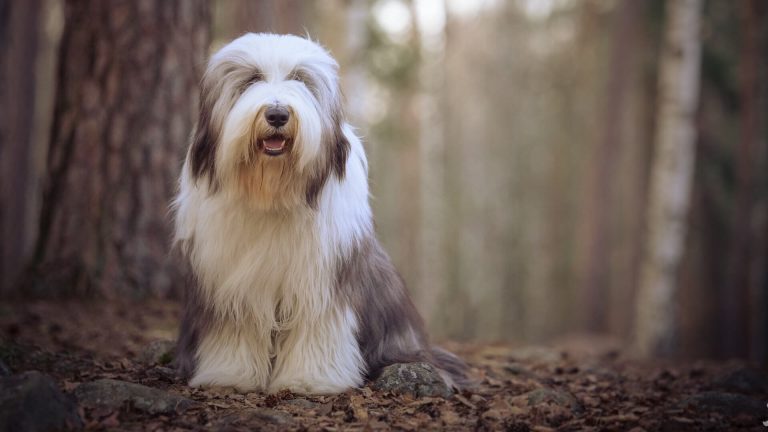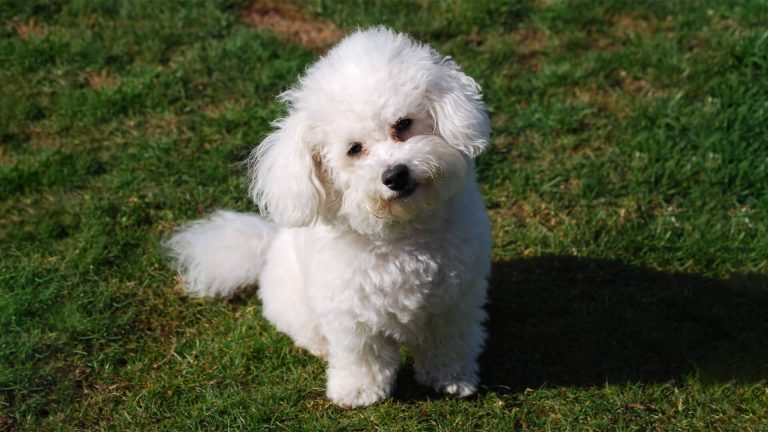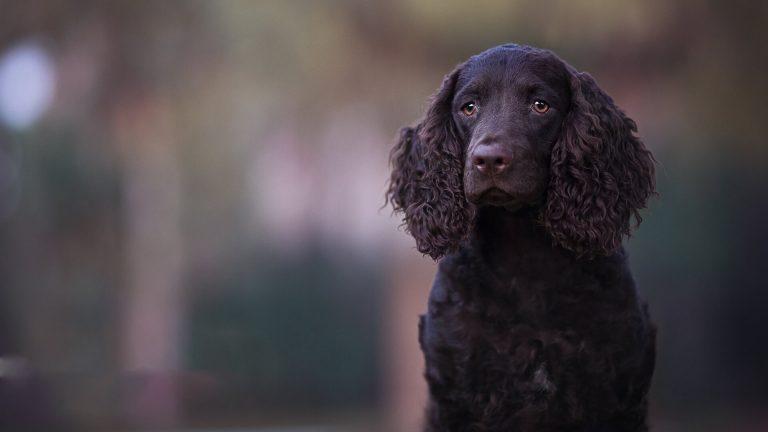The Bloodhound is a breed of dog that is known for its strong sense of smell and excellent tracking abilities. It is believed to have originated in Belgium, where it was originally used for hunting small game and tracking wounded deer. The breed is known for its powerful, wrinkled head, long ears, and strong, muscular body. It has a short, dense coat that is typically tan or red in color. Bloodhounds are intelligent and affectionate dogs that are often used for search and rescue, as well as for hunting and tracking. They are known for their endurance and determination and are often used to track missing persons or escaped prisoners.
Distinctive Features of Bloodhound
| Breed Name | Bloodhound |
| Lifespan | Up to 12 years |
| Size | Up to 27 inches |
| Weight | 80-110 pounds |
| Coat | Short, dense, and weather-resistant |
| Color | Typically black and tan or liver and tan |
| Health risk | Moderate |
| Unique trait | Long, droopy ears and exceptional scenting ability |
| Famous for | Being one of the best scent-tracking dogs |
| Temperament | Gentle, affectionate, and determined |
| Maintenance | Moderate (requires regular grooming and attention to ears) |
| Adaptability | Moderate (prefers cooler climates and spacious areas to roam) |
| Behavior | Generally good, but supervision is recommended |
| Personality | Calm, patient, and independent |
| Social | Generally good with other dogs if properly socialized |
Bloodhounds are large, muscular dogs with a distinctive appearance. They have a long, wrinkled head with a black, brown, or red coat, long, floppy ears, and a strong, powerful jaw. Bloodhounds are known for their keen sense of smell, which is one of the best in the canine world. They have over 300 million olfactory receptors in their noses, which is about 50 times more than humans have. This makes them extremely effective at tracking and locating scents.
Bloodhounds are generally a healthy breed, but they can be prone to certain health conditions which we will discuss later in this article. They have a lifespan of around 10-12 years.
Bloodhounds are large dogs, with males typically weighing between 80-110 pounds and females weighing between 70-100 pounds. They are generally 22-27 inches tall at the shoulder. Despite their size, Bloodhounds are generally gentle and docile dogs that are well-suited for families with children.
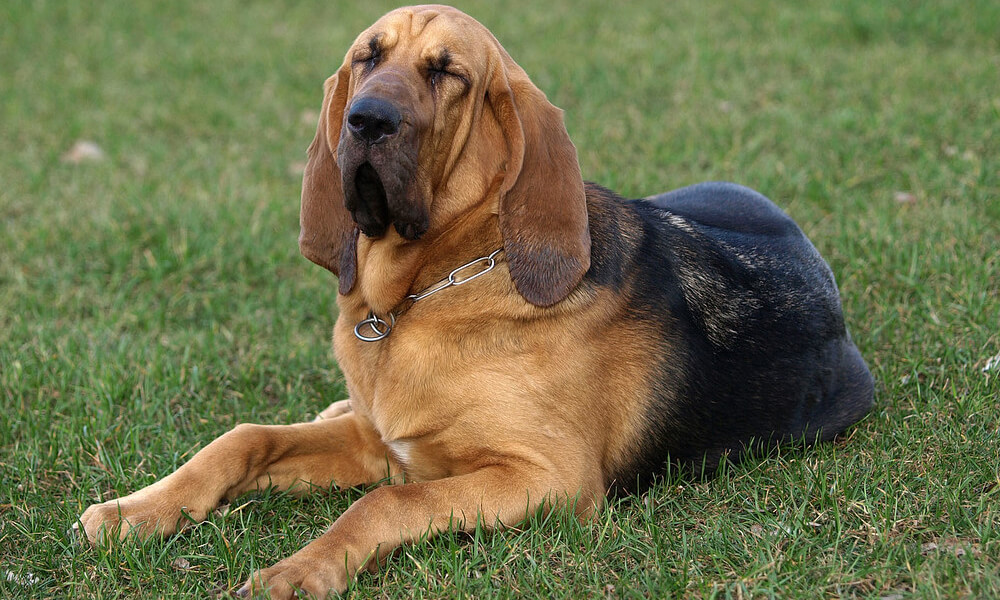
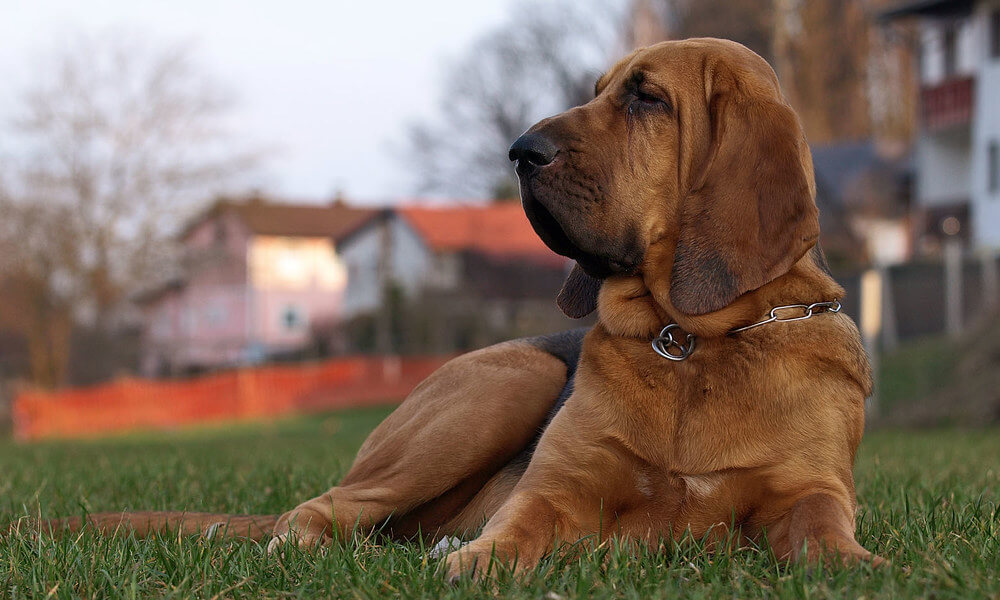
How to Take Care of Pet Bloodhound?
Taking care of a pet Bloodhound requires patience, commitment, and a deep understanding of their unique needs. These gentle and loyal dogs thrive in a loving and structured environment, and providing them with proper care is essential for their well-being.
How to Set Up a Habitat for Pet Bloodhound?
Provide a suitable habitat for your Bloodhound to ensure their physical and emotional well-being. Here are some guidelines for setting up a suitable habitat for your Bloodhound:
- Provide a safe and secure yard: Bloodhounds have a strong prey drive and may try to chase small animals, so it is mandatory to have a secure fence to prevent them from escaping. The fence should be tall enough to prevent your Bloodhound from jumping over it.
- Provide a comfortable and spacious indoor living area: Bloodhounds are large dogs and will need a spacious indoor living area. A crate can be used as a safe place for your Bloodhound to rest, but they should not be left in a crate for long periods of time.
- Make sure your Bloodhound has access to plenty of fresh water: Bloodhounds are active dogs and will need access to plenty of water to stay hydrated. Make sure to refill their water bowl regularly.
- Provide plenty of toys and chew items: Bloodhounds are known for their strong jaws, so provide them with plenty of toys and chew items to keep them occupied.
- Keep your Bloodhound's living area clean: Bloodhounds have a short, dense coat that does not shed excessively, but they will still need regular grooming to keep their coat clean and healthy. Be sure to clean their living area regularly to prevent the buildup of dirt and odors.
What to Feed Your Pet Bloodhound?
Feed your Bloodhound a balanced and nutritious diet to support their overall health and well-being. Here are some guidelines for feeding your Bloodhound:
- Choose a high-quality dog food: Look for a dog food that is formulated specifically for large breeds and meets the nutritional guidelines established by the Association of American Feed Control Officials (AAFCO). Choose a brand that uses high-quality ingredients, such as real meat and vegetables, and avoid products that contain fillers or by-products.
- Follow the recommended feeding guidelines: The amount of food you should feed your Bloodhound will depend on their age, size, and activity level. Follow the feeding guidelines provided on the dog food label, or ask your veterinarian for recommendations.
- Consider feeding your Bloodhound twice a day: It is generally recommended to feed adult dogs twice a day, in the morning and evening. This can help prevent them from becoming overweight and can also help prevent bloat, which is a serious condition that can occur in large breeds.
What to Avoid Feeding Your Pet Bloodhound?
There are certain foods that should be avoided when feeding your Bloodhound to prevent potential health issues. Here are some foods that you should avoid feeding your Bloodhound:
- Grapes and raisins: Grapes and raisins can be toxic to dogs and can cause kidney failure. Even small amounts can be dangerous, so keep these foods away from your Bloodhound.
- Chocolate: Chocolate contains theobromine, which is toxic to dogs. The darker the chocolate, the more toxic it is. Keep chocolate and chocolate-containing products away from your Bloodhound.
- Onions and garlic: Onions and garlic can cause anemia in dogs. They can be toxic even in small amounts, so avoid feeding your Bloodhound any foods that contain onions or garlic.
- Avocado: Avocado contains persin, which can cause vomiting and diarrhea in dogs. While the flesh of the avocado is generally safe for dogs to eat, the skin and pits can be harmful.
- Macadamia nuts: Macadamia nuts can cause lethargy, tremors, and hyperthermia in dogs. Keep these nuts away from your Bloodhound.
- Table scraps: While it may be tempting to share your food with your Bloodhound, avoid feeding them table scraps. Many human foods can be toxic to dogs. Stick to a well-balanced dog food to ensure your Bloodhound is getting all the nutrients they need.
Brushing, Bathing & Grooming Needs of Pet Bloodhound
Bloodhounds are a relatively low-maintenance breed when it comes to grooming, but they do require some regular care to keep their coat and skin healthy. Here are some grooming tips for your Bloodhound:
- Brush your Bloodhound regularly: Bloodhounds have a short, dense coat that does not shed excessively, but they should still be brushed regularly to remove loose hair and prevent matting. Use a slicker brush or a comb designed for short-haired breeds.
- Bathe your Bloodhound as needed: Bloodhounds do not require frequent bathing, but they should be bathed every few months or as needed. Use a mild, dog-specific shampoo and make sure to rinse thoroughly to prevent skin irritation.
- Check your Bloodhound's ears: Bloodhounds have long, floppy ears that can be prone to infection. Check your Bloodhound's ears regularly for any signs of redness, swelling, or discharge, and clean them as needed.
- Trim your Bloodhound's nails: Bloodhounds' nails grow quickly and can become too long if not trimmed regularly. Use a nail clipper specifically designed for dogs, and be careful not to cut too close to the quick (the sensitive area of the nail that contains blood vessels and nerves).
- Brush your Bloodhound's teeth: Brush your Bloodhound's teeth regularly to prevent dental problems such as gum disease and tooth decay. Use a toothbrush and toothpaste specifically designed for dogs.
Health Concerns of Pet Bloodhound
Like all breeds, Bloodhounds are prone to certain health concerns. Be aware of these health issues and to work with your veterinarian to prevent or manage any potential problems. Some common health concerns in Bloodhounds include:
- Hip dysplasia: Hip dysplasia is a common condition in large breeds that results in the abnormal development of the hip joint. It can cause pain, lameness, and difficulty moving.
- Bloat: Bloat, also known as gastric dilatation volvulus (GDV), is a serious condition that can occur in large breeds. It occurs when the stomach becomes enlarged and twisted, and can be life-threatening if not treated promptly.
- Eye problems: Bloodhounds are prone to certain eye problems, such as entropion (inward-rolling eyelids) and cherry eye (prolapse of the gland in the third eyelid). These conditions can cause discomfort and may require surgical correction.
- Skin allergies: Bloodhounds can be prone to skin allergies, which can cause itching, redness, and inflammation. Allergies can be triggered by a variety of factors, including food, environmental allergens, and parasites.
- Fold Dermatitis: Bloodhounds are susceptible to a skin condition known as "Folding Dermatitis," which refers to the inflammation or irritation that can occur in the skin folds of this breed.
- Elbow Dysplasia: Elbow dysplasia is a condition that commonly affects Bloodhounds, causing abnormalities in the development and structure of the elbow joint.
Training and Playing with Pet Bloodhound
Training and playing with your pet Bloodhound can help them stay mentally and physically stimulated, and can also strengthen the bond between you and your dog. Here are some tips for training and playing with your Bloodhound:
- Start training early: Start training your Bloodhound as early as possible to establish good behaviors and prevent bad habits from forming.
- Use positive reinforcement: Bloodhounds are intelligent and eager to please, and they respond well to positive reinforcement. Use treats, praise, and other rewards to motivate your pet Bloodhound and reinforce good behaviors.
- Use a consistent and firm approach: Bloodhounds are sensitive and may become anxious or confused if they receive mixed signals. Use a consistent and firm approach when training your Bloodhound to help them understand what you expect from them.
- Engage in interactive play: Bloodhounds are energetic and love to play. Engage in interactive play with your Bloodhound, such as playing fetch or tug-of-war, to keep them physically and mentally stimulated.
- Provide plenty of exercise: Bloodhounds are active dogs and need plenty of exercise to stay healthy and happy. Take them on regular walks or runs, and provide them with plenty of opportunities to run and play in a safe, enclosed area.
Other Pets to Keep or Avoid with Bloodhound
Bloodhounds are generally good-natured and can get along well with other pets if properly introduced and socialized. However, consider your Bloodhound's size, energy level, and personality when deciding what other pets to keep with them.
Here are some things to consider when deciding what other pets to keep with your Bloodhound:
- Compatibility: Consider the temperament and energy level of other pets when deciding if they are a good match for your Bloodhound. For example, a high-energy breed like a Border Collie may be a better match for a Bloodhound than a more laid-back breed like a Basset Hound.
- Size: Consider the size of other pets when deciding if they are a good match for your Bloodhound. Larger pets, such as horses or large livestock, may be too big and intimidating for your Bloodhound. Smaller pets, such as rodents or birds, may be at risk of being accidentally injured by your Bloodhound due to their size and strength.
- Training and socialization: Socialize your Bloodhound with other pets from an early age and to provide consistent training to help them learn how to behave around other animals. This can help prevent misunderstandings or conflicts between your Bloodhound and other pets.
Facts About Bloodhound
Here are some interesting facts about Bloodhounds:
- Bloodhounds are known for their exceptional sense of smell: They have over 300 million olfactory receptors in their noses, which is about 50 times more than humans have. This makes them extremely effective at tracking and locating scents.
- Bloodhounds are one of the oldest breeds of dogs: They are believed to have been developed in Belgium as early as the 7th century.
- Bloodhounds are often used for search and rescue: Their keen sense of smell and tracking abilities make them well-suited for finding missing persons or escaped prisoners.
- Bloodhounds have a strong prey drive: They were originally bred to hunt small game, and they may try to chase small animals if not properly trained and socialized.
- Bloodhounds are gentle and affectionate: Despite their size and strength, Bloodhounds are generally calm and docile dogs that are well-suited for families with children.
What It's Like to Keep Bloodhound as a Pet?
The Bloodhound is a large and powerful scent hound breed known for its exceptional sense of smell, wrinkled face, and droopy ears. Here's what it's like to have a Bloodhound as a pet:
Scent Tracking Ability: Bloodhounds are renowned for their extraordinary sense of smell, which is one of the keenest among all dog breeds. They have been used for centuries as tracking dogs in search and rescue operations and law enforcement work. Bloodhounds possess the ability to follow scents for long distances, making them highly skilled at trailing lost persons or animals.
Temperament: Bloodhounds are generally known for their calm and gentle temperament. They are often described as affectionate, patient, and good-natured dogs. While they are generally friendly, they can be reserved with strangers. Bloodhounds are also known to be independent thinkers, which can sometimes translate into stubbornness during training.
Exercise and Mental Stimulation: Despite their large size, Bloodhounds have a moderate exercise requirement. Regular walks, playtime, and the opportunity to explore and sniff in a safe and secure environment are important to keep them physically and mentally stimulated. Bloodhounds should always be exercised on a leash or within a secure, enclosed area due to their strong tracking instincts.
Living Environment: Bloodhounds can adapt to various living environments, including apartments, as long as they receive adequate exercise and mental stimulation. However, their baying and howling tendencies can be quite loud, which may not be suitable for noise-sensitive environments.
Ownership Considerations: Bloodhounds require committed owners who understand their specific needs. They thrive in environments where they receive proper care, exercise, and mental stimulation. Due to their powerful tracking instincts and strong sense of smell, it's essential to ensure they are in a secure and safe environment, especially when outdoors.
Frequently Asked Questions About Bloodhound
Here are some frequently asked questions about Bloodhounds:
Are Bloodhounds good family pets?
Yes, Bloodhounds can make excellent family pets. They are known for their gentle and friendly nature, and they are often great with children. Bloodhounds are loyal and loving companions, and they thrive on human interaction and attention. They can form strong bonds with their family members and are generally patient and tolerant with children. However, Bloodhounds are a large and active breed, so they require ample space and exercise. Proper training and socialization from an early age are also important to ensure they become well-behaved family pets.
Do Bloodhounds shed a lot?
Bloodhounds have a short, dense coat that does not shed excessively. They may shed a small amount of hair, but they are generally considered a low-shedding breed.
How long do Bloodhounds live?
Bloodhounds have a lifespan of around 10-12 years.
Are Bloodhounds easy to train?
Bloodhounds are intelligent and eager to please, and they can be fairly easy to train with positive reinforcement and consistent training methods. However, they can be stubborn at times and may need extra patience and persistence.
Do Bloodhounds bark a lot?
Bloodhounds are generally quiet dogs, but they may bark when they are excited or when they detect a new scent. Proper training and socialization can help prevent excessive barking.

